Kimono as a Tool for Japanese Propaganda
In the 1930s, the power and superiority of the Japanese army were displayed on indoor clothing, notably propaganda kimono.
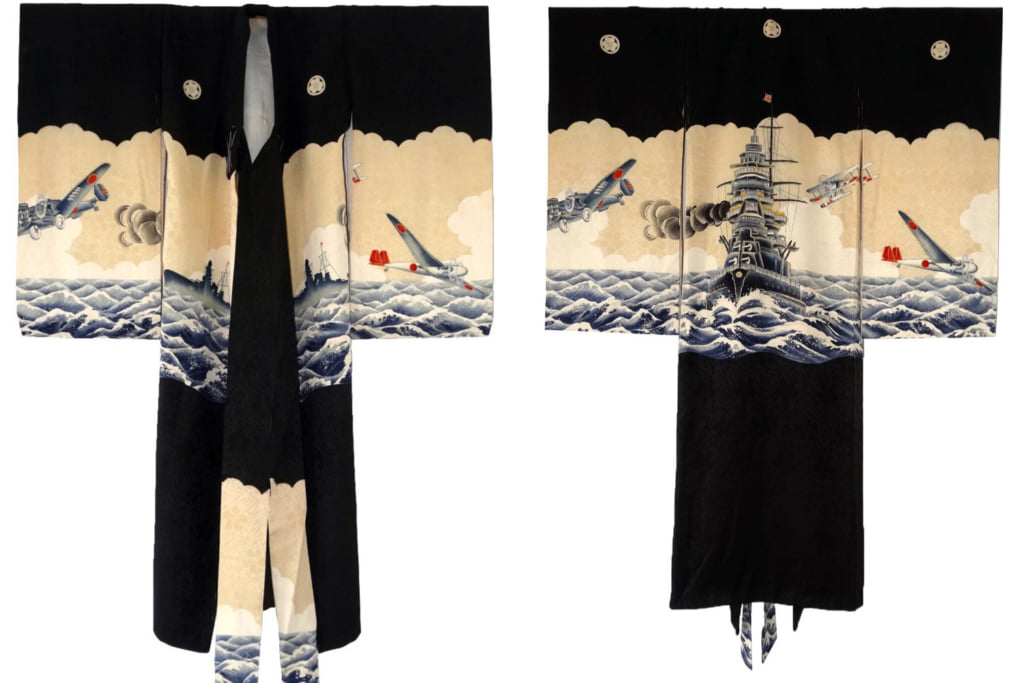
Boy’s omiyamairi with battleship and military aircraft, © NORMAN BROSTERMAN
At the end of the 19th century, the traditional kimono, with its floral or animal patterns, was joined by the so-called propaganda kimono. As Japanese society was becoming more modern, textile manufacturers followed popular trends and decorated their fabrics with daring motifs, inspired by the Art Deco and Dada movements, where birds and cherry blossom gave way to skyscrapers, trains, and aeroplanes.
The production of these kimono shifted in the 1930s when Japan took a military turn. The fabrics produced in workshops started to promote the country’s political and military ambitions in South-East Asia, China, or Manchuria. Like this fabric featuring a mikasa, the ship sailed by admiral Togo Heihachiro, hero of the Russo-Japanese War (1904-1905), which was the first Japanese victory in an international conflict, or another on which a battleship cuts through the ocean, escorted by combat aircraft. Other propaganda kimono bring together nationalist themes and pop culture references, where baby-faced young men, named gosho ningyo, carrying rucksacks, brandish the flag of the imperial army, surrounded by tanks.
Patterns kept private
However, most of these fabrics adorned with propaganda images were destined to be used to create indoor clothing, reserved for private celebrations or worn underneath another outfit, hidden from unknown eyes. These military and nationalist motifs often appeared on nagajuban, pieces of cotton to be worn underneath kimono and on omiyamairi, costumes worn by young children on their first visit to a Shinto shrine.
These kimono were rediscovered thanks to Jacqueline Atkins. The American textile historian and specialist in 20th-century Japanese fabrics has also released a book on the subject entitled Wearing Propaganda, Textiles in Japan, Britain and the United States 1931–1945.
Wearing Propaganda, Textiles in Japan, Britain and the United States 1931–1945 (2005) by Jacqueline Atkins is published by Yale University Press.
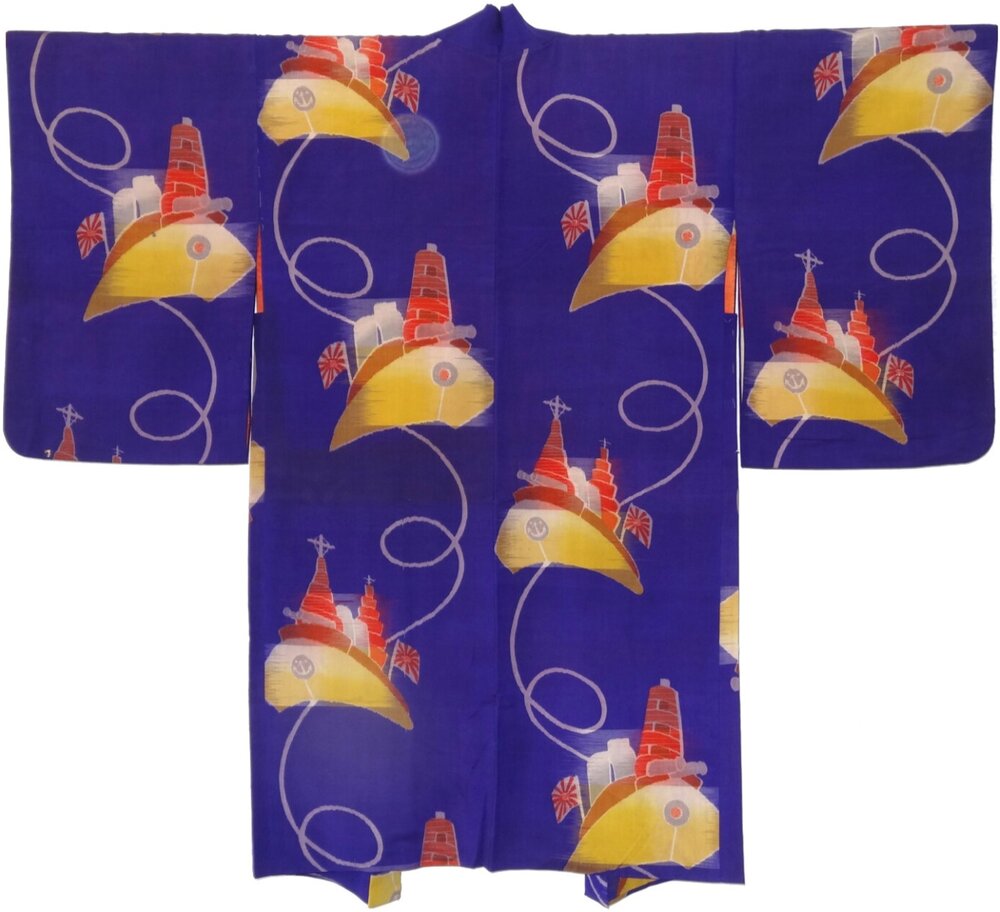
Woman’s haori, circa 1934 © NORMAN BROSTERMAN
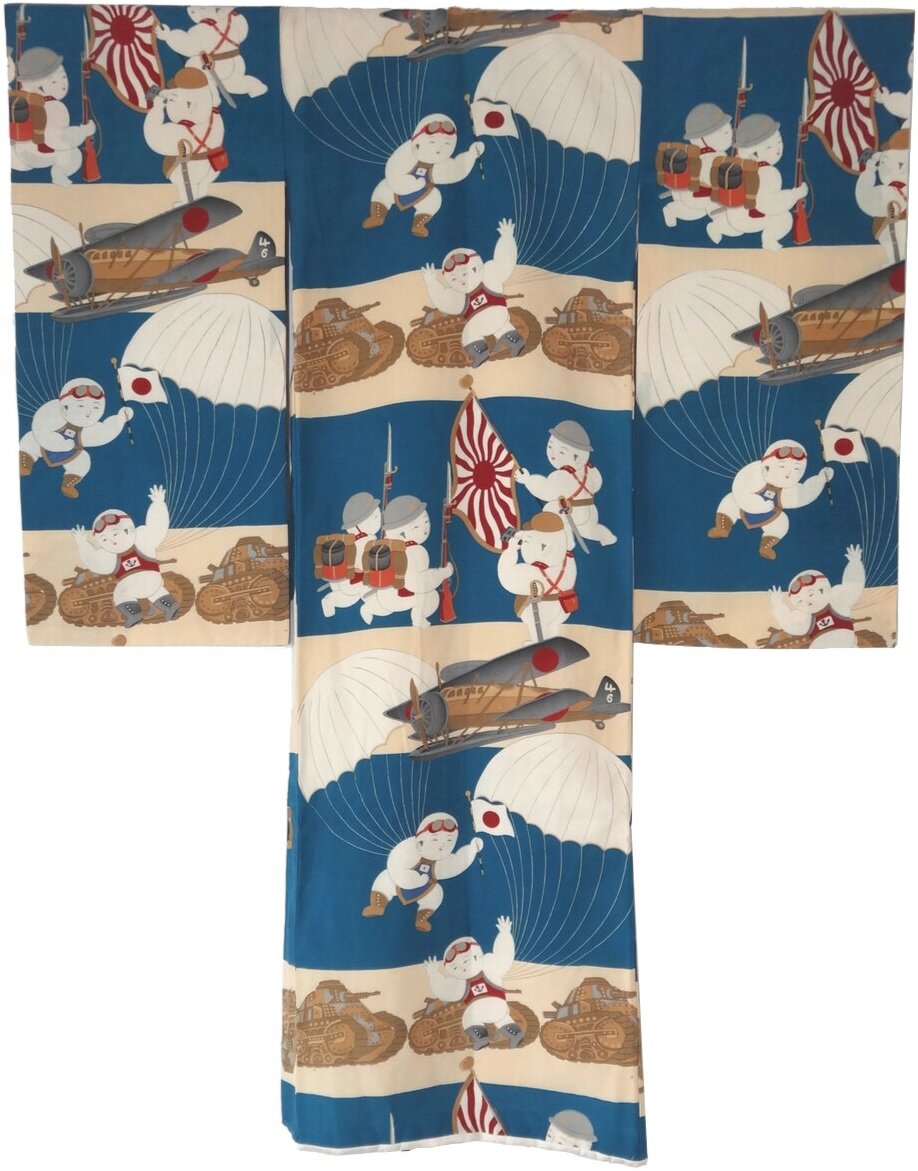
Boy’s omiyamairi, 1930s © NORMAN BROSTERMAN
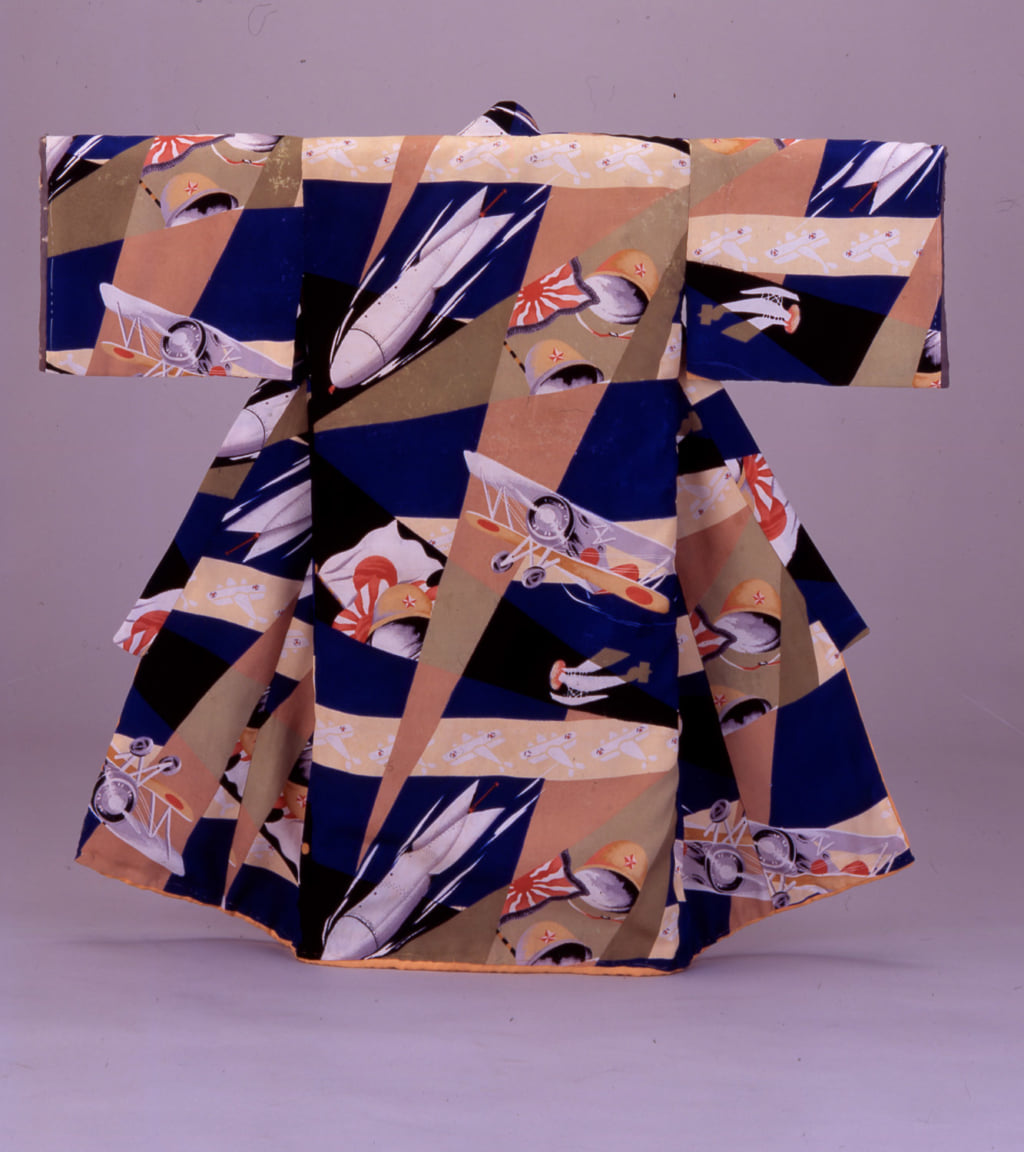
Kimono. 1940s. Collection of Yoku Tanaka. © Nakagawa Tadaaki / ARTEC Studio.
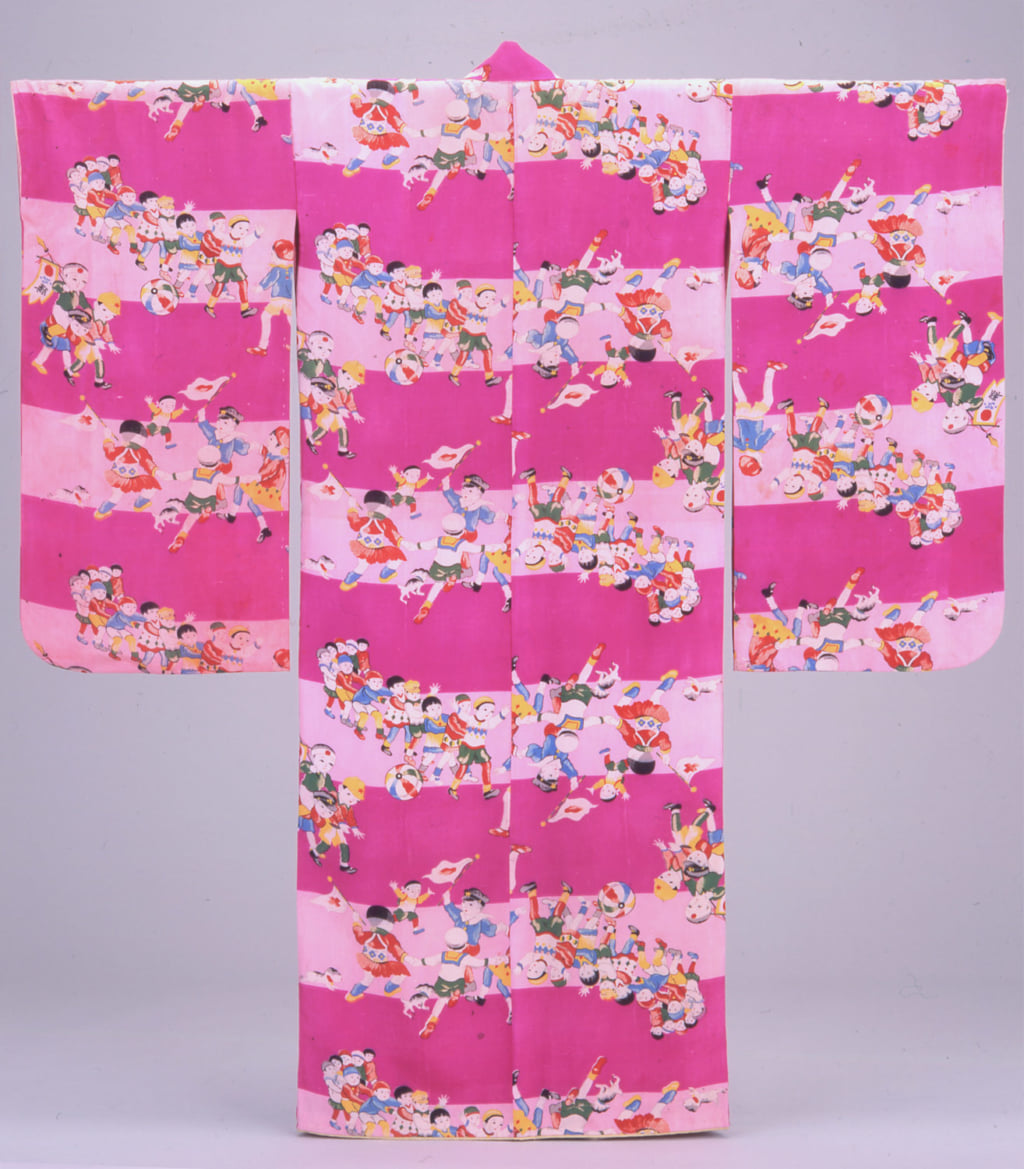
Girl’s kimono. 1930s. Collection of Ranko Nagata. © Nakagawa Tadaaki / ARTEC Studio
TRENDING
-
A House from the Taisho Era Reveals Its Secrets
While visiting an abandoned building, Hamish Campbell discovered photographs the owner had taken of the place in the 1920s.

-
The Taboo-Breaking Erotica of Toshio Saeki
The master of the 1970s Japanese avant-garde reimagined his most iconic artworks for a limited box set with silkscreen artist Fumie Taniyama.

-
With Meisa Fujishiro, Tokyo's Nudes Stand Tall
In the series 'Sketches of Tokyo', the photographer revisits the genre by bringing it face to face with the capital's architecture.

-
Masahisa Fukase's Family Portraits
In his series ‘Family’, the photographer compiles surprising photos in which he questions death, the inescapable.

-
Hajime Sorayama's Futuristic Eroticism
The illustrator is the pioneer for a form of hyperrealism that combines sensuality and technology and depicts sexualised robots.





